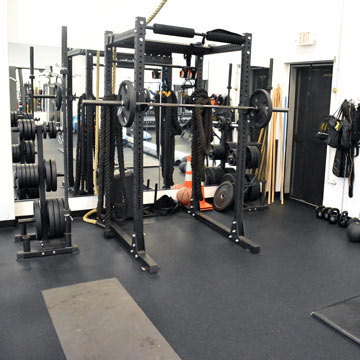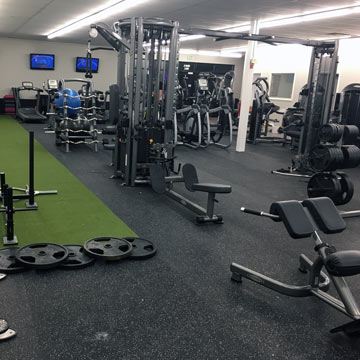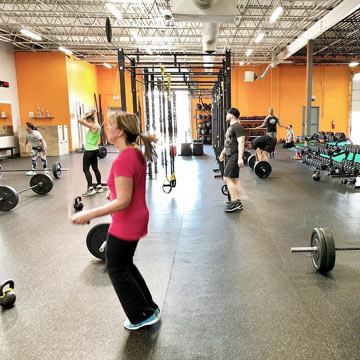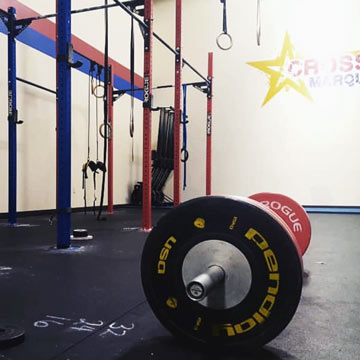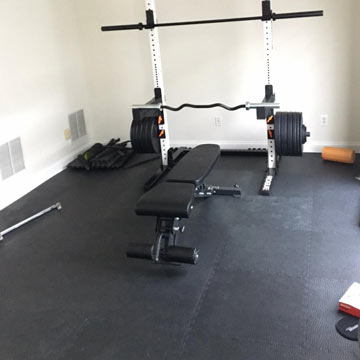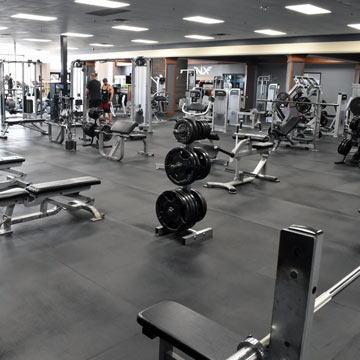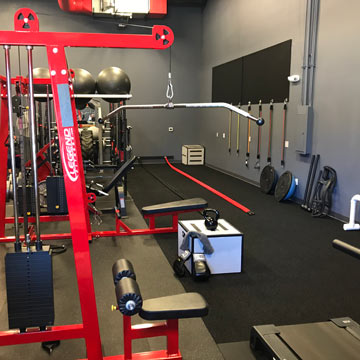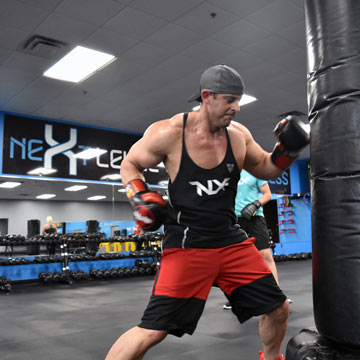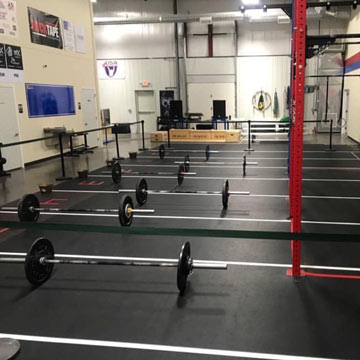What Is The Best Thickness For Gym Flooring Mats?
Related Product: Home Gym Flooring Tile Pebble 3/8 Inch x 2x2 Ft.
To best answer that question, you'll first need to identify what types of exercises will be done in the gym and then what type of material you'd like the gym floor to be made of.
If you'll be doing a lot of heavy lifting exercises in the gym, you'll likely want some sort of rubber gym flooring. If you've got a few machines and plan to use some light free weights, maybe PVC or super high-density EVA gym flooring is sufficient. If gymnastics, martial arts, aerobics, or wrestling-type activities are in the future of your gym, a softer foam material with more cushion may be your desired choice. Below, we'll outline just a few of those options to give you an idea of the proper thickness of these materials for different activities.
What Is The Best Thickness For Gym Flooring Used For Weight Training?
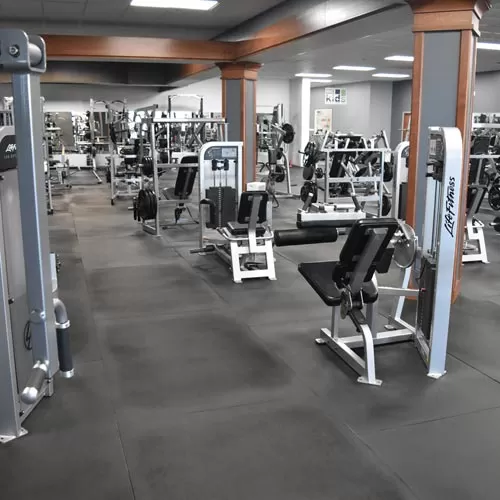
The standard gym flooring for weight training gyms is almost always a rubber gym floor. If most if not all of your weight training will be done using machines, you can get by pretty inexpensively with rubber flooring anywhere from 1/4 to 3/8 inch thick. Obviously, the thicker the rubber, the more protection it will provide to your subfloor. For any rubber floor 1/2 inch or thinner you probably won't feel much of a difference on your body as the rubber material is quite hard and the flooring generally lays completely flat.
As you increase the amount of weight you plan to use for your workouts and switch more to free weights, you'll want to also increase the thickness. 3/4 inch thick rubber gym flooring is generally regarded as the bare minimum for proper floor protection for olympic lifting.
If you will be doing a lot of dropping of the weights, you'll want to consider going even thicker - especially if you have neighbors in close proximity. With greater thickness, it allows more room for sound proof gym flooring design. At 2 inch thickness and thicker you enter the realm of athletic sound rubber tiles, which help greatly in reducing sound transfer. And with their specially designed support system, they also offer greater impact absorption to protect your body during exercises such as jumping ropes or box jumps.
What Is The Best Thickness For Gym Flooring Used For Plyometric Training?
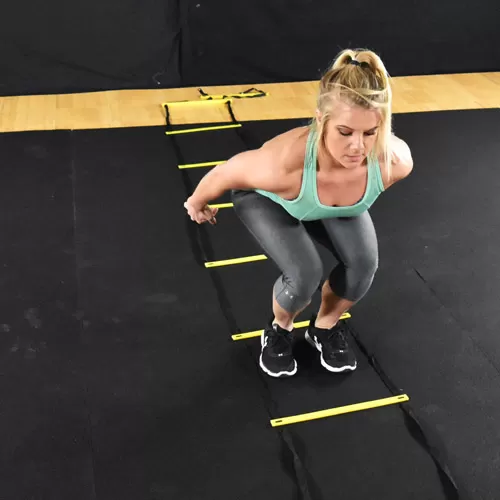
When doing plyometric training, you'll be doing a lot of jumping, so you'll want to protect your joints from that repeat impact of landing your jump. You'll also want to make so you have proper traction to reduce the risk of injury due to slips while performing quick and powerful movements.
For traction purposes, rubber is still your best option, but in this case you'll want a less dense rubber gym flooring that will offer more cushion than standard rubber flooring. With that being said, you'll want a non-vulcanized rubber. In fact there is rubber flooring specifically designed for plyometrics - called plyometric rubber.
Plyometric Rubber ranges for 6 mm to 1/2 inch thick. At 6 mm, it works well as an underlayment for other gym flooring surfaces. Anything greater than that can be used alone for plyometric exercise. With greater thickness comes a longer life span and greater durability but also significantly more weight.
What Is The Best Thickness for Gym Flooring At Home?
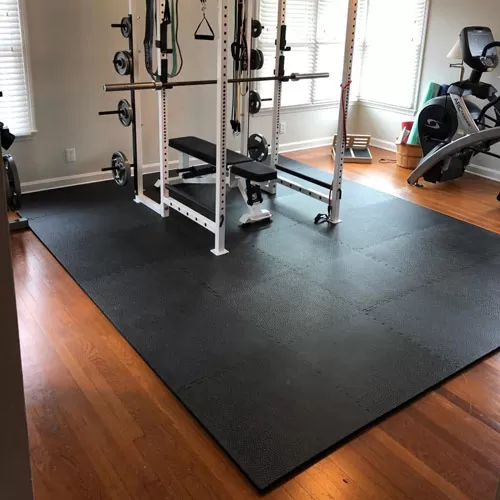
This is one of the circumstances the can have a large range of variation because the type of existing flooring you'll be covering can vary so much.
If you are looking to put in gym flooring over carpet, the choice is easy. You'll want to use a raised plastic gym flooring system.
Greatmats has several of these options, with flexible PVC tiles, such as the StayLock line of home gym floors, rising to the top. These tiles will not damage or slip on the carpet.
Something to keep in mind, however, is that the lower pile the carpet this will be installed over, the more stable any flooring system will be. You'll also want to note that these flooring systems are not designed for intentional dropping of heavy weights. They will, however, help protect your floor from lower impact occurrences. PVC home gym flooring also does a great job of softening hard floors, such as concrete. Nearly all of these will fall around that 1/2 inch thickness mark.
Speaking of concrete, if you're looking for the least expensive way to cover your concrete with more cushioned surface, super high density EVA foam tiles are the way to go.
For most home gym applications, the 10 mm home gym flooring tile will suffice. If you're moderate level weightlifter, or even leaning towards advanced, a 3/4 inch Gym Floor Tile will be better suited for your needs. Either of these home gym tiles are lightweight and portable. While the 3/4 inch super high density EVA tiles are durable enough to be used as portable horse stall flooring, we do not recommend a foam floor of any kind for powerlifting.
What Is The Best Thickness For Gym Flooring Used For Martial Arts Or Wrestling?
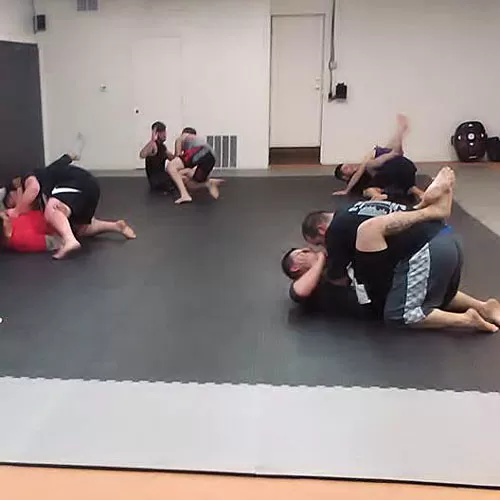
This the case where where foam gym flooring is your ideal choice. When you're talking about a primarily standing martial art where there will be a lot of jumping, spinning and kicking a 20 mm thickness is ideal.
If you're going to start throwing in a little bit of ground work, up that thickness to about an inch.
For arts where grappling and throwing are the primary techniques, aim closer to 1.5 inches of foam gym flooring. At 1.5 inches thick, Greatmats martial arts mats offer a fall height rating for protection against serious head injuries.
What Is The Best Thickness For Gym Flooring Used For Dance Aerobics?

When it comes to dance aerobic gym flooring, its hard to beat Greatmats 1 inch thick martial arts interlocking mats. They provide just enough cushion to relieve fatigue but not enough to restrict movement.
While there are endless factors that play into determining what's the best thickness for gym flooring, this should get you off to a good start.



